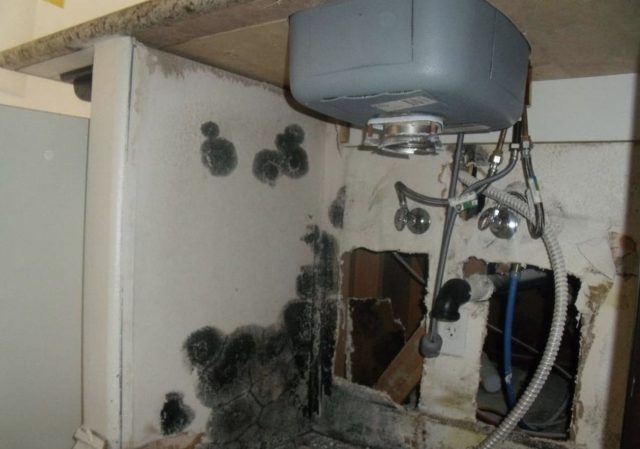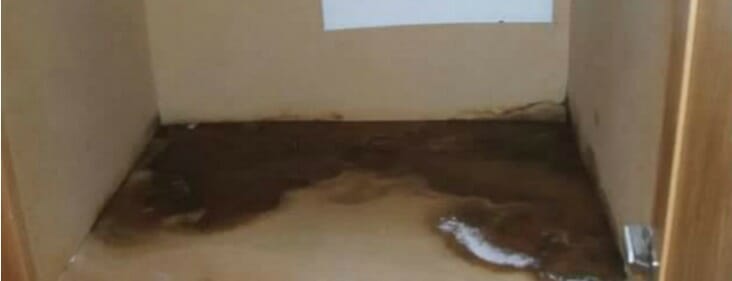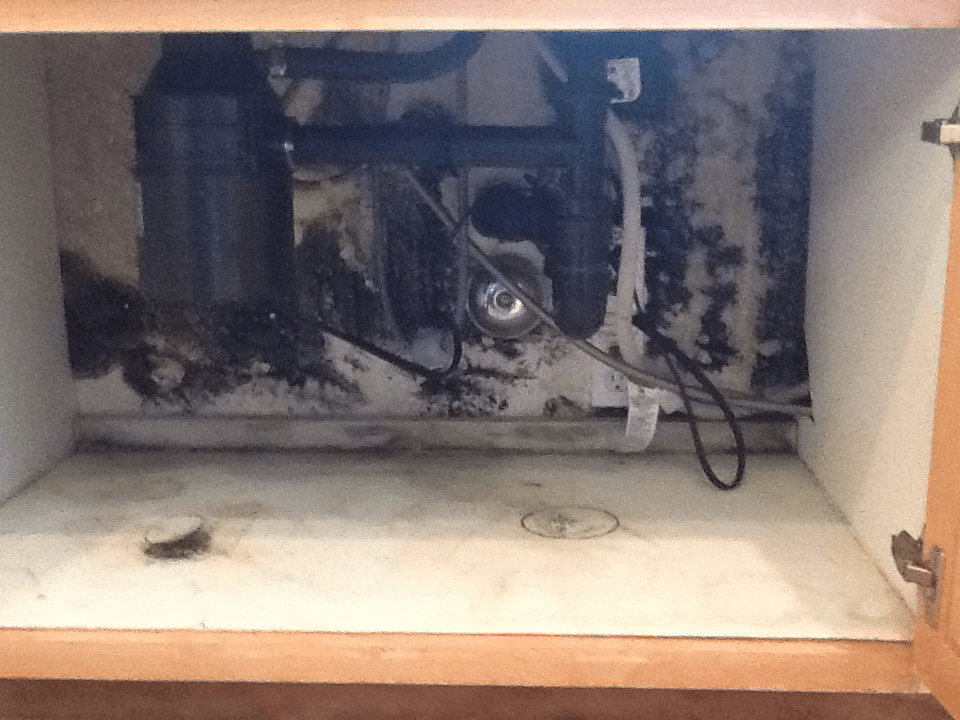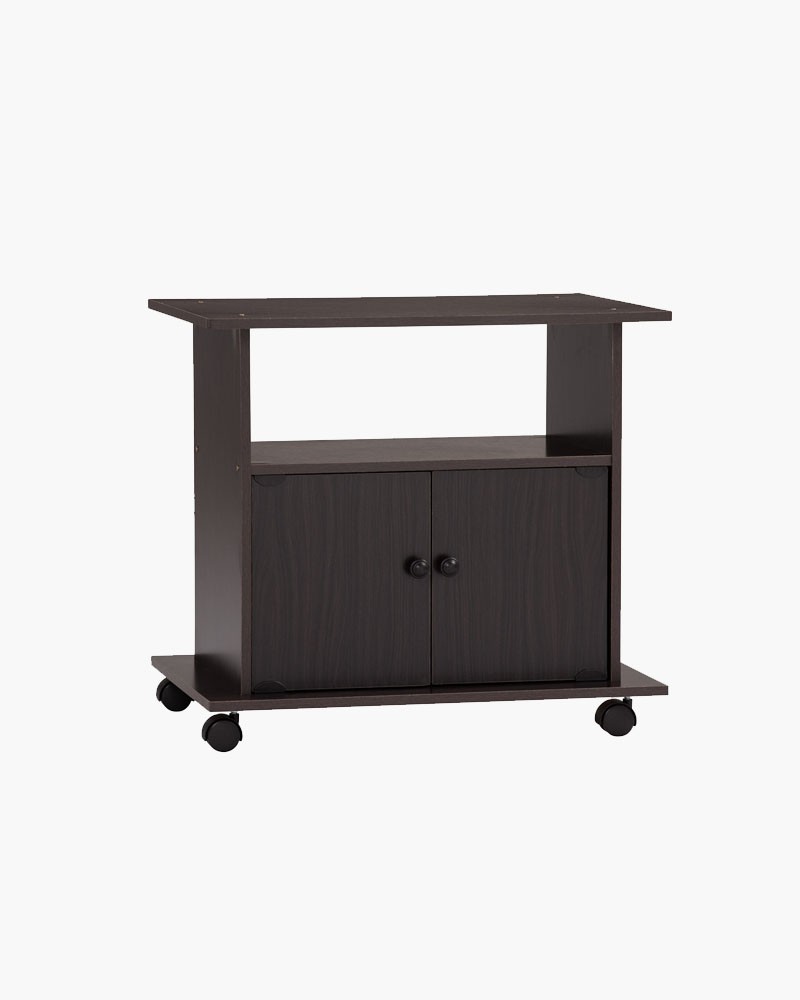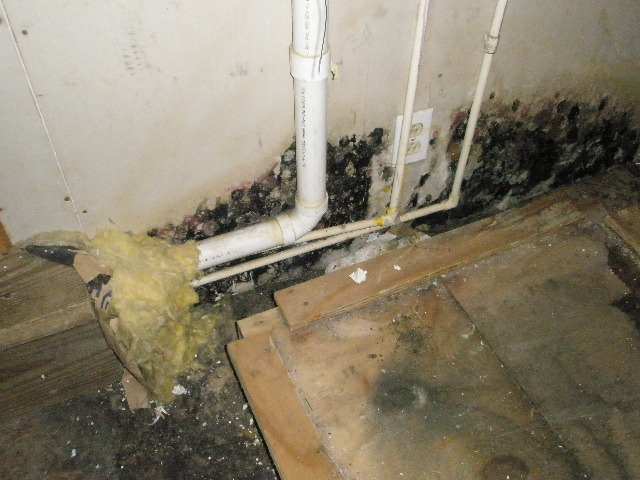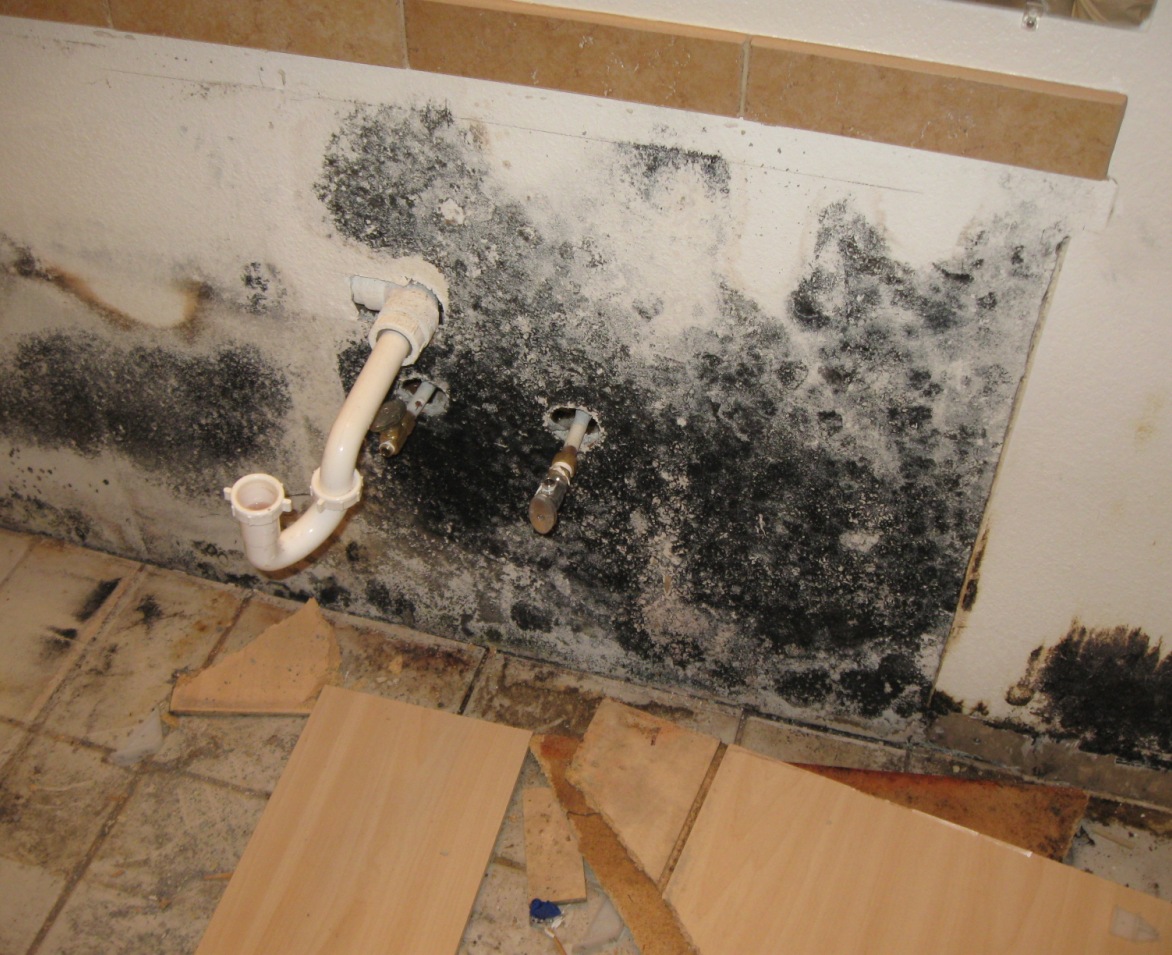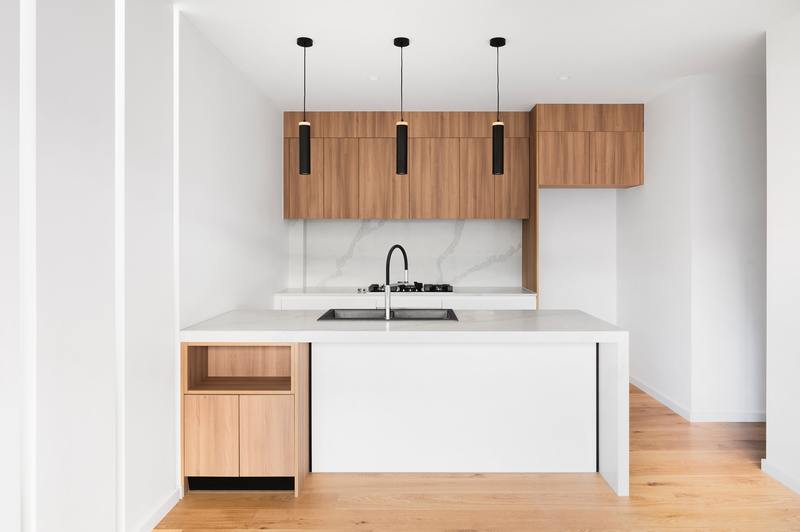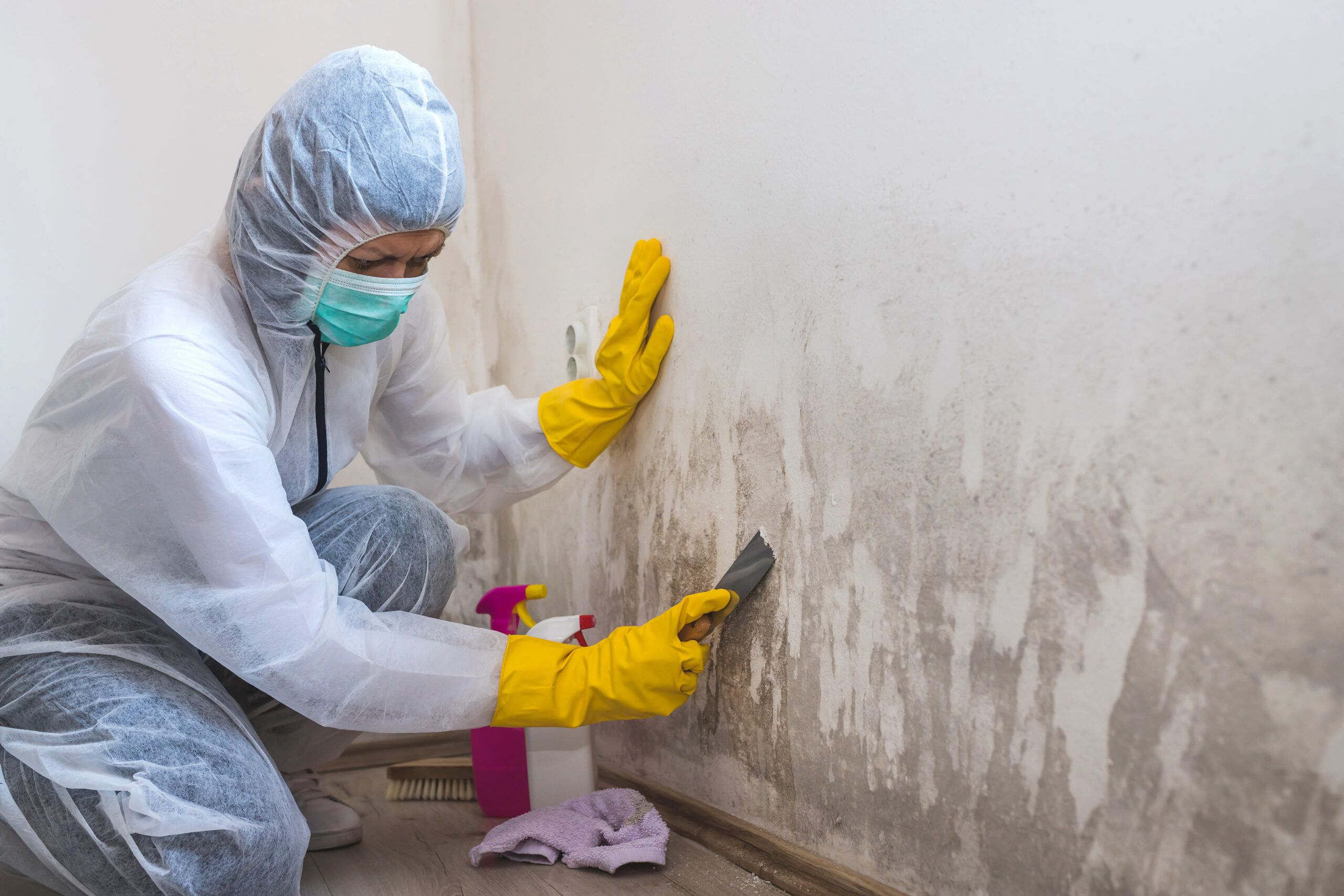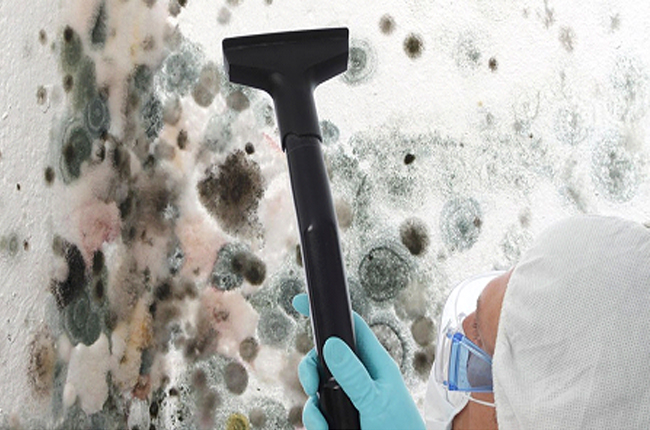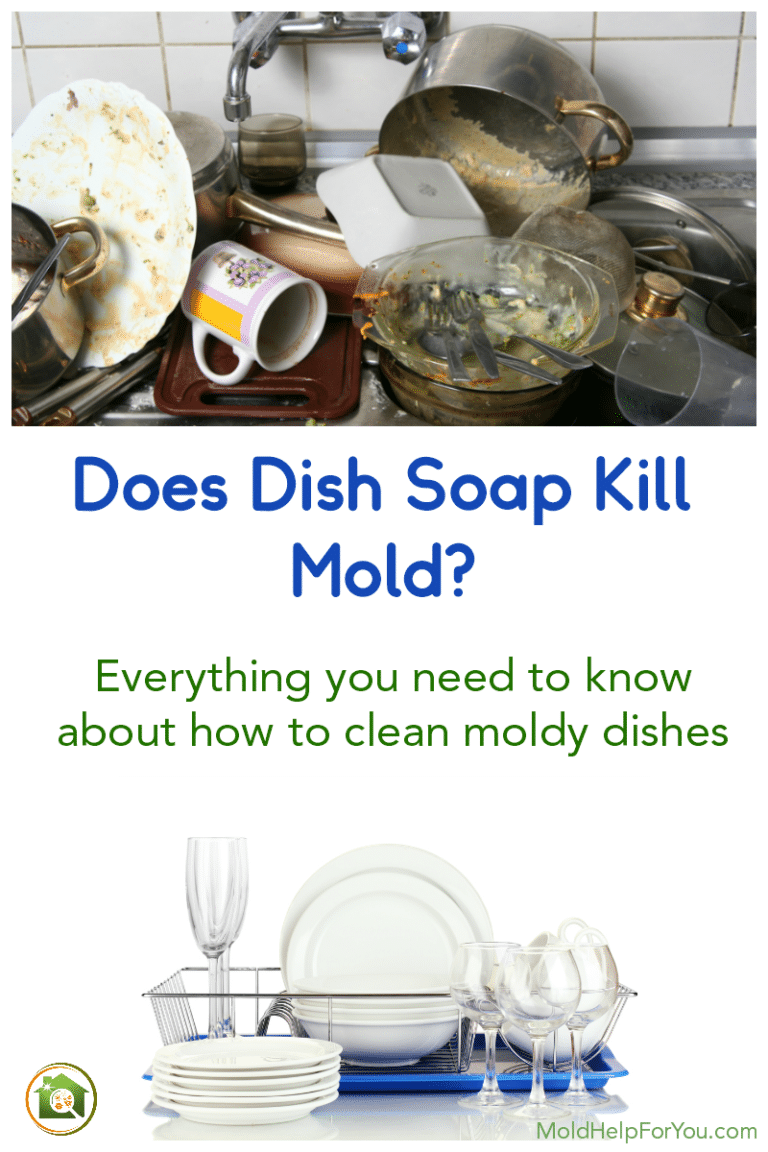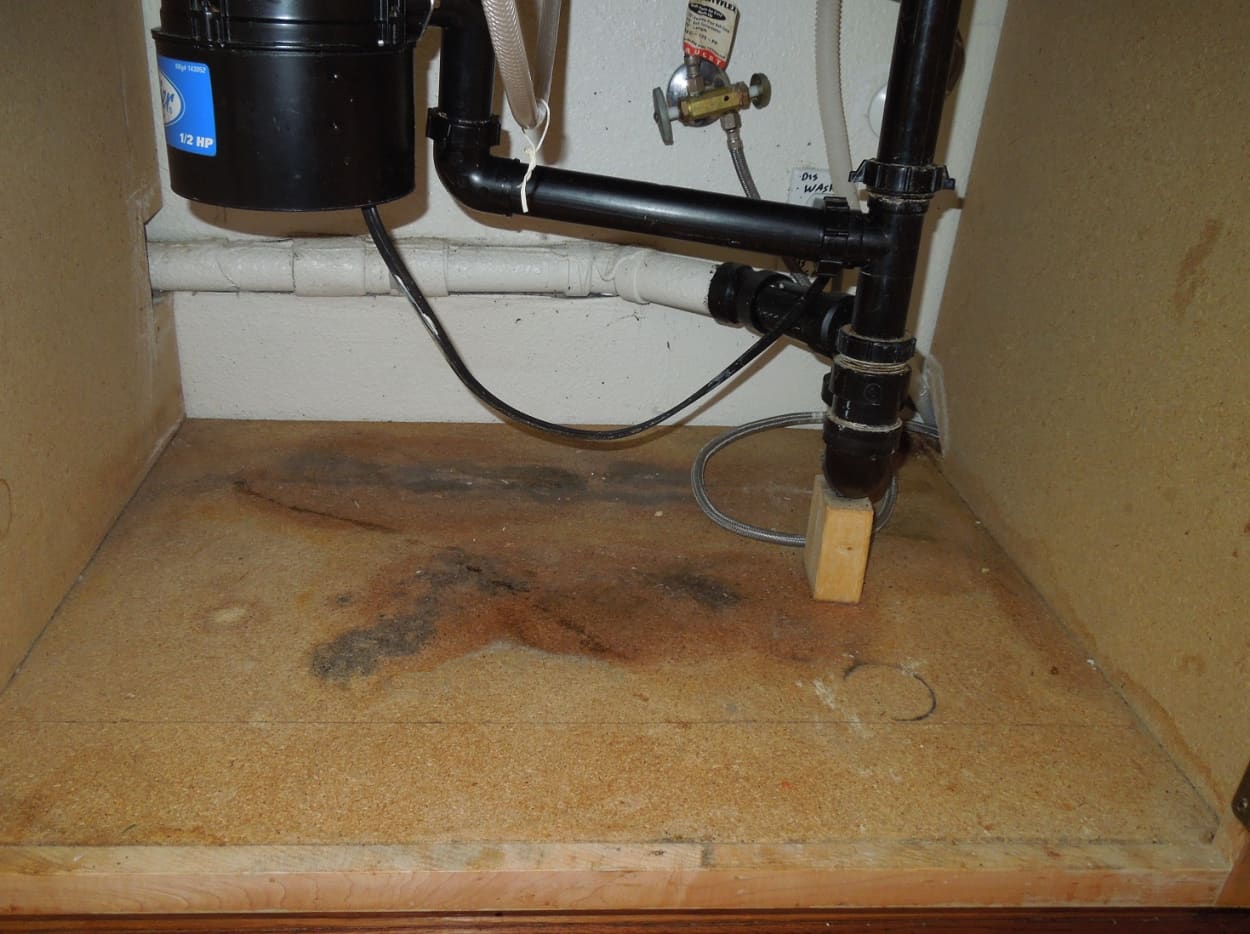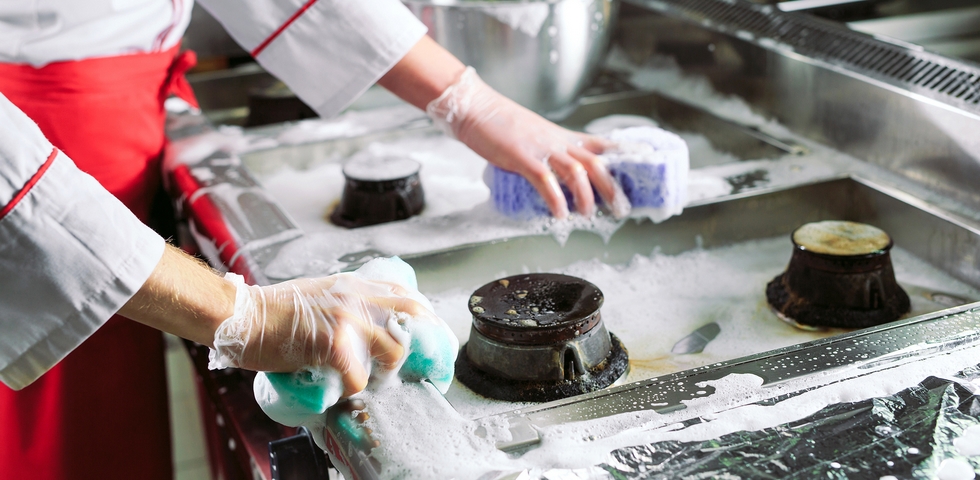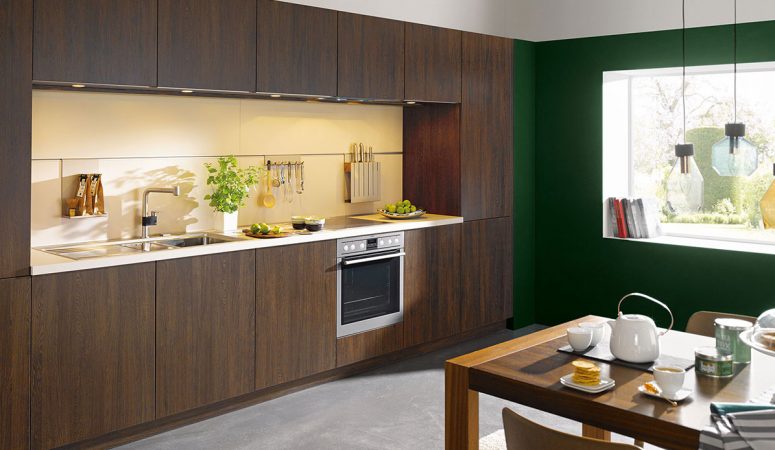If you've noticed a musty smell coming from your kitchen sink cabinet or black spots appearing on its walls, you may have a mold problem. Mold can thrive in damp and dark environments, making the area under your kitchen sink a prime location for its growth. Not only is mold unsightly, but it can also pose health risks to you and your family. However, with the right tools and techniques, you can easily remove mold from your kitchen sink cabinet and prevent it from coming back.1. How to Remove Mold from Kitchen Sink Cabinet
When it comes to removing mold from your kitchen sink cabinet, there are a few methods you can try. One popular and effective approach is using a mixture of equal parts water and white vinegar. Simply spray the solution onto the affected area and let it sit for about an hour before scrubbing it off with a brush. Another option is using a commercial mold cleaner, which can be found at most hardware or home improvement stores. Whichever method you choose, be sure to wear gloves and a mask for protection.2. Best Ways to Get Rid of Mold in Kitchen Sink Cabinet
If you prefer to use natural remedies for mold removal, there are a few DIY options you can try. One option is using baking soda and water to create a paste, which can be applied to the moldy areas and left to dry before wiping it off. Another method is using hydrogen peroxide, which has strong anti-fungal properties. Mix equal parts of hydrogen peroxide and water and spray it onto the mold, then let it sit for 10-15 minutes before scrubbing and wiping it off.3. DIY Mold Removal for Kitchen Sink Cabinet
Aside from the DIY methods mentioned above, there are other natural remedies you can use to eliminate mold from your kitchen sink cabinet. Tea tree oil, for example, is a powerful anti-fungal and antibacterial agent. Mix a teaspoon of tea tree oil with a cup of water and spray it onto the affected area. Let it sit for an hour before wiping it off. You can also use grapefruit seed extract, which has similar properties to tea tree oil. Mix 20 drops of grapefruit seed extract with two cups of water and spray it onto the mold.4. Natural Remedies for Removing Mold in Kitchen Sink Cabinet
If you're dealing with a severe mold infestation in your kitchen sink cabinet, it's important to follow a step-by-step process for its removal. First, make sure to wear protective gear such as gloves, a mask, and eye protection. Next, remove all items from the cabinet and place them in a safe and dry area. Then, using a vacuum with a HEPA filter, vacuum the affected area to remove any loose mold spores. After that, apply your chosen cleaning solution and let it sit for the recommended time before scrubbing and wiping it off. Finally, make sure to thoroughly dry the area to prevent mold from coming back.5. Step-by-Step Guide for Mold Removal in Kitchen Sink Cabinet
Once you've successfully removed mold from your kitchen sink cabinet, it's important to take steps to prevent its growth in the future. The key is to keep the area clean and dry. Make sure to fix any leaks or plumbing issues that may be causing moisture buildup. Also, regularly clean and disinfect the cabinet to prevent any mold spores from taking hold. Using a dehumidifier can also help to reduce moisture levels in the air, making it less conducive for mold growth.6. Preventing Mold Growth in Kitchen Sink Cabinet
To effectively prevent mold growth in your kitchen sink cabinet, it's important to understand the common causes of its appearance. Some of the most common causes include leaking pipes, poor ventilation, and high humidity levels. Make sure to regularly check for any leaks and fix them immediately. You can also improve ventilation by installing a fan or opening a window when using the sink. Keeping humidity levels below 50% can also help to prevent mold growth.7. Common Causes of Mold in Kitchen Sink Cabinet
If you're dealing with a severe mold infestation or are unable to remove the mold yourself, it may be best to hire a professional mold removal service. They have the necessary tools and expertise to effectively remove mold from your kitchen sink cabinet and prevent it from coming back. Make sure to do your research and hire a reputable and experienced company for the best results.8. Professional Mold Removal Services for Kitchen Sink Cabinet
After removing mold from your kitchen sink cabinet, it's important to thoroughly clean and disinfect the area to ensure all mold spores are eliminated. Using a mixture of water and bleach (one cup of bleach per gallon of water), scrub the affected area and let it sit for 10-15 minutes before wiping it off. This will help to kill any remaining mold spores and prevent them from regrowing.9. How to Clean and Disinfect Moldy Kitchen Sink Cabinet
Finally, it's important to know the signs of mold infestation in your kitchen sink cabinet and how to address them. Some of the most common signs include a musty smell, visible black or white spots, and peeling or discolored paint. If you notice any of these signs, it's important to act quickly to prevent the mold from spreading. Use the methods mentioned above to remove the mold and make sure to fix any underlying issues to prevent its return. In conclusion, mold in your kitchen sink cabinet is not only unsightly but can also be harmful to your health. By following the tips and methods outlined in this article, you can effectively remove mold from your kitchen sink cabinet and prevent it from coming back. Remember to regularly clean and inspect the area to catch any mold growth early on. With proper maintenance, you can keep your kitchen sink cabinet mold-free and ensure a healthy living environment for you and your family.10. Signs of Mold Infestation in Kitchen Sink Cabinet and How to Address Them
Why Removing Mold from Your Kitchen Sink Cabinet is Essential for a Healthy Home
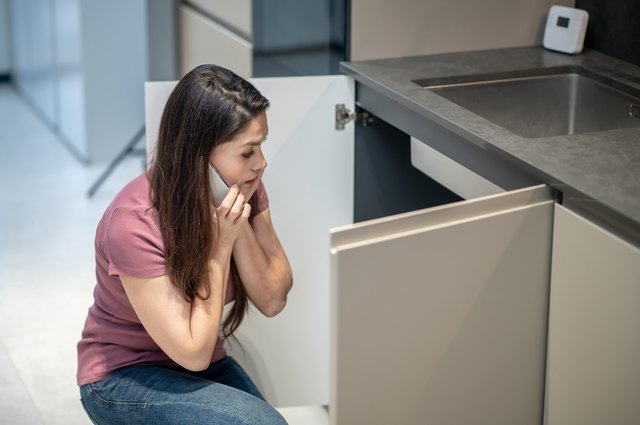
Understanding the Dangers of Mold in Your Kitchen Sink Cabinet
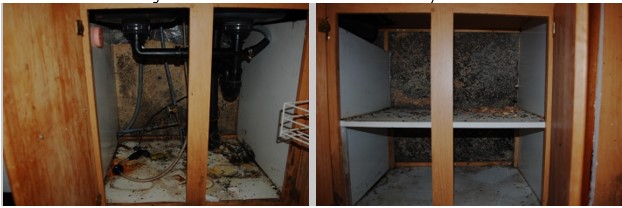 Mold is a type of fungus that thrives in damp and dark environments, making your kitchen sink cabinet the perfect breeding ground. Not only is it unsightly and can damage your cabinet, but it also poses a serious threat to your health.
Mold spores can trigger allergies and respiratory problems, especially in those with weakened immune systems.
If left untreated, the mold can spread to other areas of your home, causing further damage and potentially impacting the structural integrity of your house.
Mold is a type of fungus that thrives in damp and dark environments, making your kitchen sink cabinet the perfect breeding ground. Not only is it unsightly and can damage your cabinet, but it also poses a serious threat to your health.
Mold spores can trigger allergies and respiratory problems, especially in those with weakened immune systems.
If left untreated, the mold can spread to other areas of your home, causing further damage and potentially impacting the structural integrity of your house.
The Importance of Removing Mold from Your Kitchen Sink Cabinet
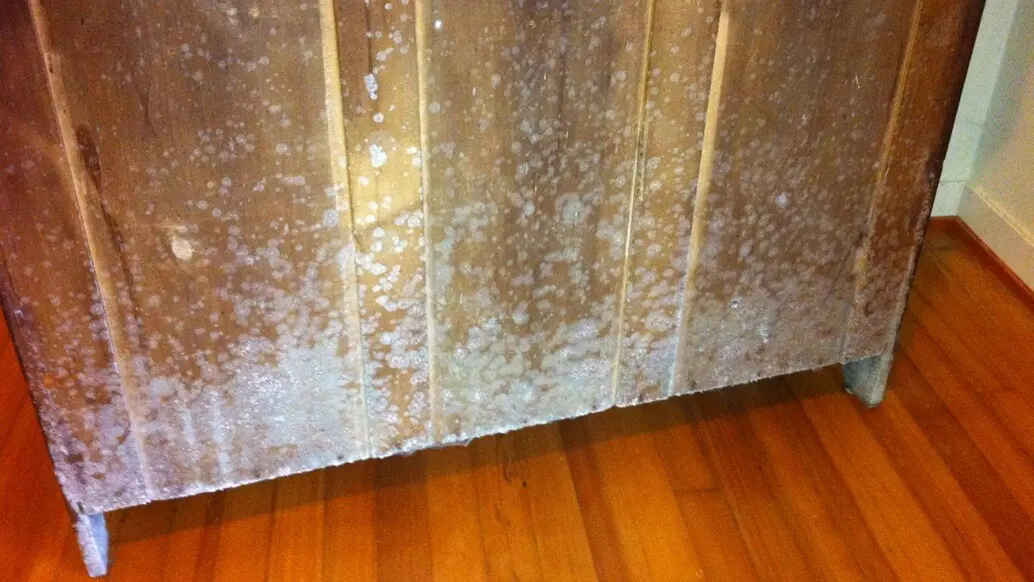 Removing mold from your kitchen sink cabinet is essential for maintaining a healthy home.
The presence of mold not only affects your physical health but can also have a negative impact on your mental well-being. The musty odor and unsightly appearance of mold can cause stress and anxiety, making it difficult to relax in your own home. Additionally, if you're planning on selling your house in the future,
mold can significantly decrease its value and make it harder to sell.
Removing mold from your kitchen sink cabinet is essential for maintaining a healthy home.
The presence of mold not only affects your physical health but can also have a negative impact on your mental well-being. The musty odor and unsightly appearance of mold can cause stress and anxiety, making it difficult to relax in your own home. Additionally, if you're planning on selling your house in the future,
mold can significantly decrease its value and make it harder to sell.
The Process of Removing Mold from Your Kitchen Sink Cabinet
 Now that you understand the dangers of mold in your kitchen sink cabinet, it's important to know how to properly remove it.
The first step is to identify the source of the moisture that is causing the mold to grow.
This could be a leaky sink or pipe, or even excessive humidity in the kitchen. Once the source is fixed, you can begin the actual removal process.
It's crucial to wear protective gear, such as gloves and a mask, to avoid inhaling mold spores.
Using a solution of water and bleach, scrub the affected area thoroughly and then rinse with clean water. Make sure to dry the area completely to prevent future mold growth.
Now that you understand the dangers of mold in your kitchen sink cabinet, it's important to know how to properly remove it.
The first step is to identify the source of the moisture that is causing the mold to grow.
This could be a leaky sink or pipe, or even excessive humidity in the kitchen. Once the source is fixed, you can begin the actual removal process.
It's crucial to wear protective gear, such as gloves and a mask, to avoid inhaling mold spores.
Using a solution of water and bleach, scrub the affected area thoroughly and then rinse with clean water. Make sure to dry the area completely to prevent future mold growth.
Preventing Mold from Returning to Your Kitchen Sink Cabinet
 Prevention is key when it comes to mold in your kitchen sink cabinet.
Regularly check for any leaks or moisture build-up and promptly fix them.
Keep the area clean and dry, and consider using a dehumidifier if necessary.
You can also use natural mold inhibitors, such as white vinegar or tea tree oil, to prevent future growth. Making these simple changes can go a long way in ensuring a mold-free kitchen sink cabinet and a healthy home.
Prevention is key when it comes to mold in your kitchen sink cabinet.
Regularly check for any leaks or moisture build-up and promptly fix them.
Keep the area clean and dry, and consider using a dehumidifier if necessary.
You can also use natural mold inhibitors, such as white vinegar or tea tree oil, to prevent future growth. Making these simple changes can go a long way in ensuring a mold-free kitchen sink cabinet and a healthy home.
Conclusion
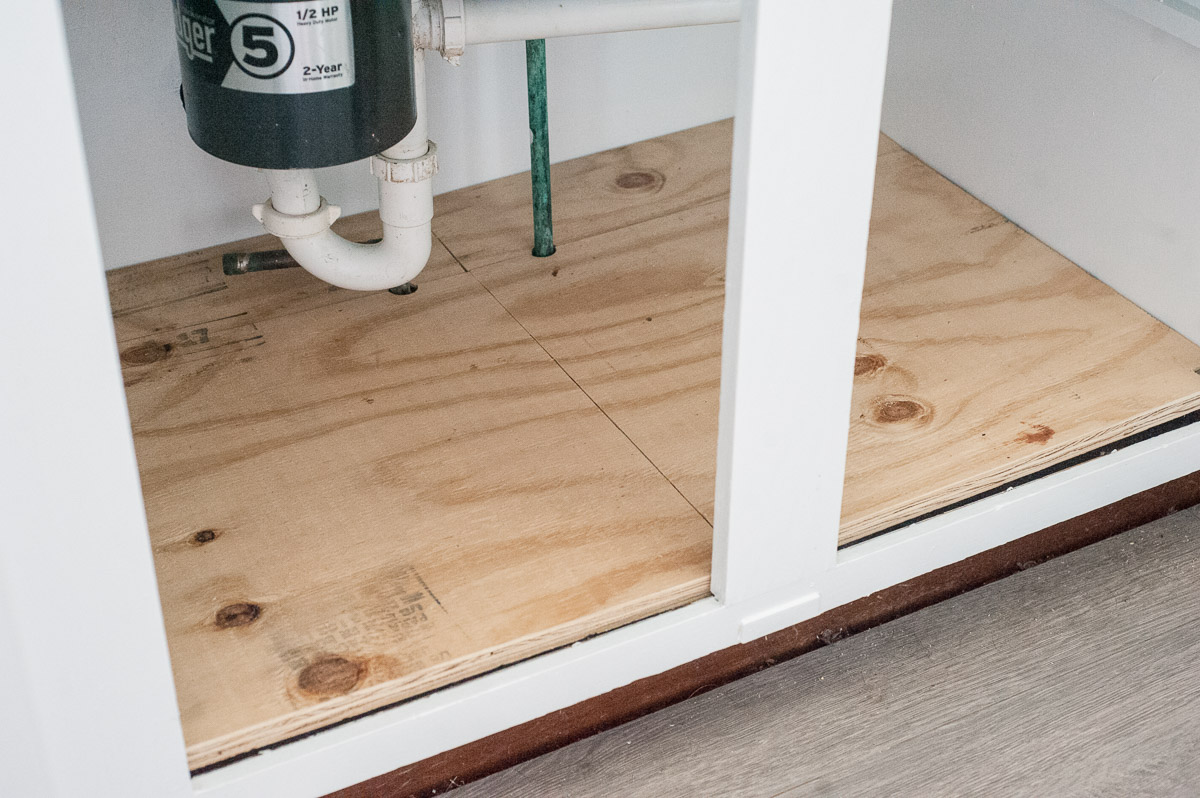 In conclusion,
removing mold from your kitchen sink cabinet is not just about aesthetics, it's about maintaining a safe and healthy home for you and your family.
By understanding the dangers of mold, properly removing it, and taking preventative measures, you can ensure a mold-free kitchen and peace of mind. Don't neglect this crucial aspect of house design and make sure to regularly check and maintain your kitchen sink cabinet to prevent the growth of mold.
In conclusion,
removing mold from your kitchen sink cabinet is not just about aesthetics, it's about maintaining a safe and healthy home for you and your family.
By understanding the dangers of mold, properly removing it, and taking preventative measures, you can ensure a mold-free kitchen and peace of mind. Don't neglect this crucial aspect of house design and make sure to regularly check and maintain your kitchen sink cabinet to prevent the growth of mold.





